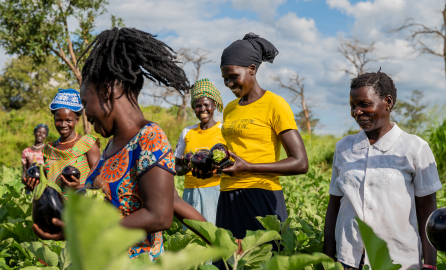Thhe EU-UNOPS Lives in Dignity Grant Facility addressed the systemic challenge of traditional funding models that create unequal power dynamics between partners, where sub-granting or consortium approaches typically position...
Description
The European Commission’s Directorate-General for International Partnerships (DG INTPA) founded the EU-UNOPS Lives in Dignity (LiD) Grant Facility in 2020. It aimed to efficiently and effectively channel funding into promoting development-oriented approaches to new, recurrent, and protracted displacement crises, focusing on early operational engagement.
Supporting self-reliance
The LiD Grant Facility supported innovative projects with €24 million in funding between 2021 and 2025. Projects funded work across some of the world's most pressing forced displacement crises, including those countries impacted by crises in Afghanistan, Myanmar, Venezuela, the Horn of Africa, the Sahel region of Africa, and Central America. Core to the facility's work was the harnessing of learning and best practices locally and regionally to inform work on forced displacement globally.
Context
In the past decade, the forced displacement crisis has increased in scale and complexity. The number of people forcibly displaced had risen to 89.3 million by the end of 2021 – more than one per cent of the world’s population. An estimated 40 per cent of those displaced were children under the age of 18.
Most displaced people exist in a limbo that is economically insecure, psychologically traumatic, and devoid of a planning horizon. Host communities, 86 per cent of whom are in developing countries, are themselves frequently overburdened, under-resourced and overwhelmed by the influx.
The protracted nature of forced displacement means current models of displacement management are largely ineffective. Stronger cooperation between development, humanitarian, and peace actors will result in more effective and lasting solutions for those affected by forced displacement, ensuring they do not become locked in a cycle of reliance and dependency.
Approach and impact
The LiD Grant Facility supported refugees and other displaced persons to become productive members of their host communities and participate in furthering their common resilience, socio-economic growth and development.
The facility's strategic priorities were:
- Early engagement of development-led approaches to forced displacement
- A needs-based rather than status-based approach, including all displacement-affected populations
- A coherent and complementary approach with strong synergies between all partners.
The Facility focused on five thematic areas:
- Economic livelihood development
- Spatial planning, housing and settlement
- Integrated service delivery (health, education, water and sanitation, energy)
- Protection in development
- Addressing disaster and climate-related human mobility
The LiD Grant Facility’s flexible structure ensured it was agile and responsive, reinforcing the humanitarian-development-peace nexus. It contributed to and aligned with existing global efforts, drawing on the expertise of numerous actors, which in turn informed the strategic direction and the overall work of the facility.
Operational structure
The LiD Grant Facility Project Steering Committee (PSC) was made up of representatives from both the European Commission and UNOPS, and was supported by a global Advisory Board (AB) made up of expert representatives from displacement and development-focused entities. A local advisory structure was created to support the PSC, AB and the Facility’s implementing partners throughout implementation. A wider group of stakeholders were also regularly consulted as part of the establishment and implementation of the Facility’s work.
UNOPS was responsible for the management of the facility. The European Commission funded the project and was responsible for the strategic direction and funding allocation for the facility.
The Lives in Dignity Grant Facility Strategy
The Lives in Dignity Grant Facility strategy was built on the foundations of global policy frameworks and was driven by an international and multidisciplinary consultative process. The flexible structure ensured it was agile and responsive, reinforcing the humanitarian-development-peace nexus. The full strategy is available in English, French and Spanish.

